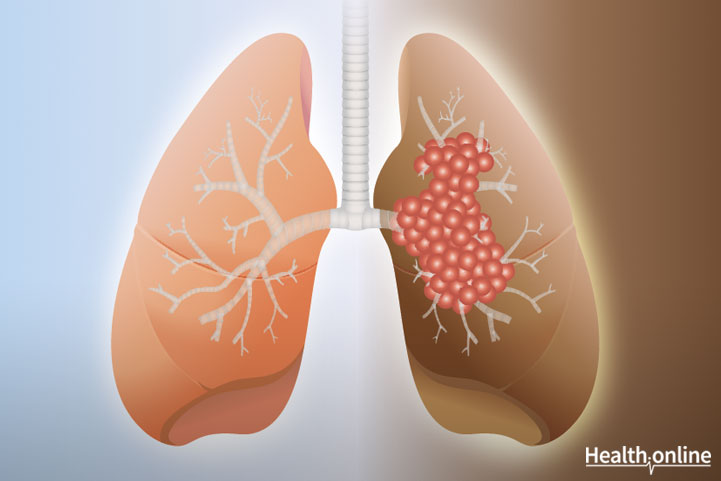
Types of Lung Cancer
The following are the different types of Lung Cancer:
Non-small cell lung cancer
The most common lung cancer is non-small cell (NSCLC) which accounts for up to eighty-five percent of lung cancer patients. “Non-small cell” is an umbrella term for three types of cancer: adenocarcinomas, large cell carcinomas, and squamous cell carcinomas. Adenocarcinomas grow slowly and first appear on the periphery of the lung. This is the type of lung cancer most likely to present in a non-smoker, though it must be noted that the majority of its victims do smoke. Squamous cell carcinomas, by contrast, are located in the middle of the lung, and large cell carcinomas are wild cards that can appear anywhere in the lung.
The treatment for non-small cell lung cancer will vary depending on how far the disease has advanced. In the very early stages of this disease, it can be eradicated with surgery alone through radiation or chemotherapy may be deemed necessary, as well. If the cancer is diagnosed as advanced, radiation may be used alone or in conjunction with surgery and chemotherapy. If the cancer has spread beyond the lungs, chest, diaphragm, and lymph nodes, the patient is generally advised that the surgery will be futile. Medical efforts will concentrate on slowing the progress of the disease and alleviating symptoms.
Small cell lung cancer
Small cell lung cancer treatment uses the same technology, but on a different schedule, based on the severity of the illness. In its early stage, small cell lung cancer (SCLC) is treated with both radiation and chemotherapy. At a later stage, chemo will be prescribed to abate cancer and, because small cell lung cancer tends to spread to the brain, radiation may be prescribed for the brain, even if no tumors are evident at that moment.
Metastatic lung cancer
Once lung cancer has spread beyond the lungs and chest, it is considered “metastatic.” While a diagnosis of metastatic lung cancer is not automatically a death sentence, the prognosis is grim. Lung cancer that has spread this far is also known as Stage IV cancer and it comes with a life expectancy of around eight months, according to some sources. Most people will agree that time spent in the hospital with a needle in your arm is not quality time. Patients who are diagnosed at this stage should discuss with their doctors and family whether the treatment is worth the pain and discomfort that inevitably accompany aggressive chemotherapy and radiation. Some people will decide to fight while others may opt to spend their remaining time with their loved ones.




